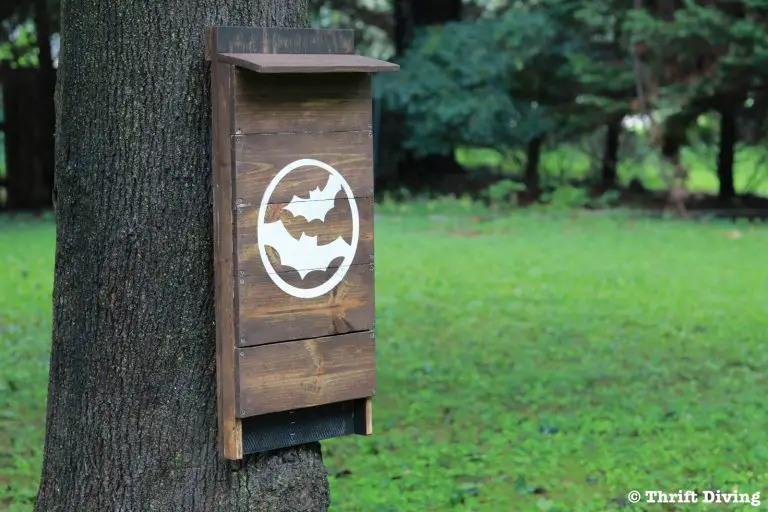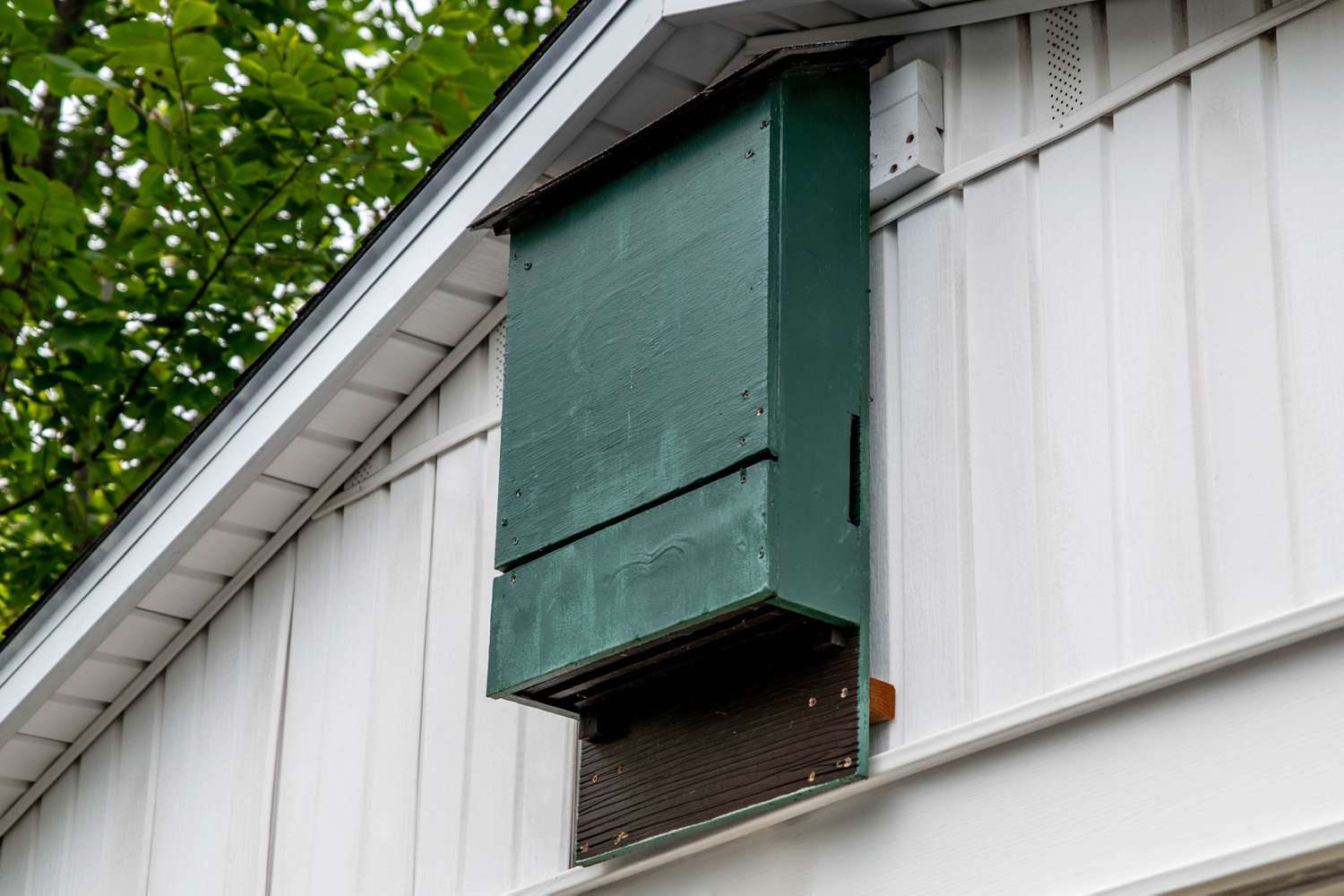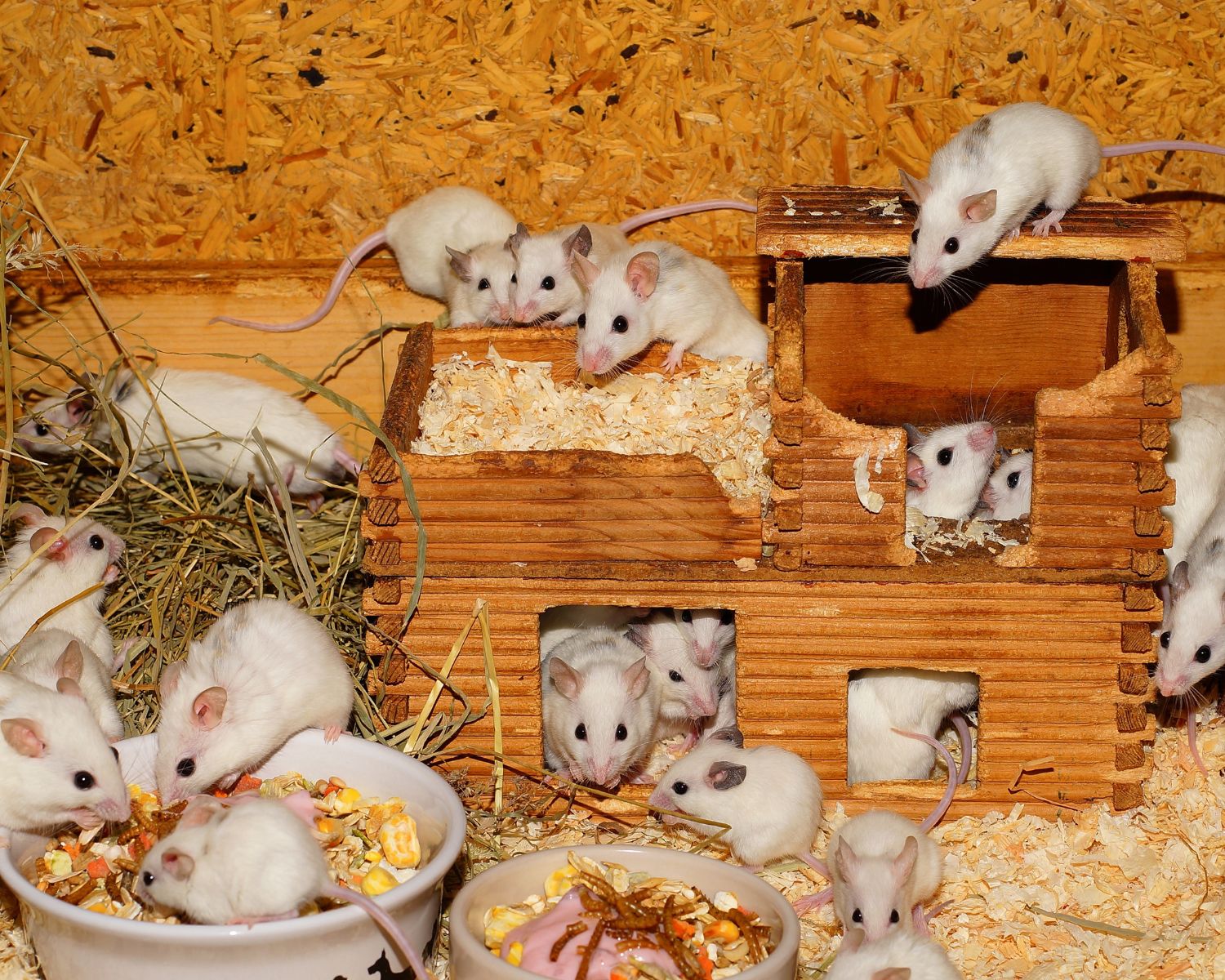Homemade bat houses provide safe roosting spots for bats. They help control insect populations and support local ecosystems.
Bats play a crucial role in maintaining balanced ecosystems by consuming vast amounts of insects, including mosquitoes and agricultural pests. Building a homemade bat house is an excellent way to support these beneficial creatures and encourage their presence in your area.
Bat houses mimic natural roosting sites, offering a safe haven for bats to sleep and raise their young. Constructing a bat house is relatively simple and can be a rewarding project for nature enthusiasts. Proper placement of your bat house is essential for attracting bats, so choose a sunny spot with minimal obstructions. By installing a bat house, you contribute to biodiversity and enjoy fewer insects around your home.
Introduction To Bat Houses
Bats play a crucial role in our ecosystem. They help control insect populations and pollinate plants. Creating a homemade bat house can support these amazing creatures. It also provides them with a safe place to roost and raise their young. This introduction will guide you through the importance and benefits of bat houses.
Importance Of Bats
Bats are essential for maintaining a balanced environment. They eat large numbers of insects, including mosquitoes and agricultural pests. This natural pest control can reduce the need for chemical pesticides. Bats also help in the pollination of flowers and the dispersal of seeds.
Their presence indicates a healthy ecosystem. Many bat species are endangered due to habitat loss and other threats. By building a bat house, you can help protect these vital creatures.
Benefits To Gardens
Bats offer numerous benefits to gardens. They act as natural pest controllers, reducing the number of harmful insects.
- Bats eat mosquitoes, which can be a nuisance in gardens.
- They also consume beetles, moths, and other garden pests.
Having a bat house can lead to a healthier garden. Fewer pests mean less damage to plants and flowers. Bats also contribute to the pollination of certain plants, promoting garden growth.
Building a bat house is a simple and rewarding project. It helps bats and benefits your garden simultaneously. Consider adding a bat house to your garden today.

Credit: diy.dunnlumber.com
Choosing The Right Location
Choosing the right location for your homemade bat house is crucial. Bats need a safe and suitable environment to thrive. Placing the bat house properly ensures it attracts bats and serves its purpose effectively.
Ideal Placement
For the best results, place the bat house at least 12 to 20 feet high. This height keeps it away from ground predators. It also helps bats feel secure. Ensure the bat house gets at least six hours of sunlight each day. Bats love warmth, so a sunny spot is ideal.
Mount the bat house on a building or a pole. Avoid trees, as they provide hiding spots for predators. Choose a location near a water source. Bats need water for drinking and hunting insects.
| Factor | Recommendation |
|---|---|
| Height | 12 to 20 feet |
| Sunlight | At least 6 hours daily |
| Mounting Location | Building or pole |
| Proximity to Water | Near a water source |
Avoiding Predators
Predators pose a significant threat to bats. To protect them, follow these tips:
- Avoid placing the bat house on trees. Trees attract predators like owls and raccoons.
- Ensure the bat house is high enough. Height reduces the risk of ground predators reaching it.
- Place the bat house in an open area. This allows bats a clear flight path for easy escape.
By following these guidelines, you can create a safe haven for bats. Your homemade bat house will attract these beneficial creatures and support their conservation.
Materials And Tools Needed
Creating a homemade bat house is an exciting and rewarding project. To get started, gather the right materials and tools. This ensures your bat house is safe and durable.
Essential Supplies
Here is a list of essential supplies you will need:
- Wood: Use untreated, rough-cut wood. Cedar or pine works best.
- Screws: Galvanized screws resist rust and hold the house together.
- Caulk: Exterior-grade caulk seals the edges and prevents drafts.
- Paint: Exterior-grade, non-toxic paint. Dark colors absorb heat.
- Mesh: Plastic mesh for the inside. Bats need this to grip.
Tools Needed
To build your bat house, you will need some basic tools:
- Saw: A hand saw or circular saw for cutting wood.
- Drill: For drilling pilot holes and driving screws.
- Measuring Tape: Ensures precise measurements.
- Hammer: Useful for tapping pieces into place.
- Paintbrush: For applying paint or stain.
Optional Add-ons
Consider these optional add-ons to enhance your bat house:
- Thermometer: Attach a thermometer to monitor the internal temperature.
- Predator Guard: Install a metal guard to protect bats from predators.
- Insulation: Add insulation for colder climates.
- Bat Attractant: Use bat attractant spray to lure bats to the house.
With these materials and tools, you’re ready to build a sturdy and inviting bat house. Happy building!
Step-by-step Construction
Creating a homemade bat house can be an exciting project. It helps provide a safe haven for these beneficial creatures. Follow this step-by-step construction guide to build your own bat house.
Cutting The Wood
First, you need to gather your materials. Use weather-resistant wood like cedar or plywood.
- Measure and mark the wood according to your bat house plans.
- Use a saw to cut the wood into the required pieces.
- Ensure all cuts are smooth to avoid injuries to the bats.
Here are the basic dimensions you can follow:
| Part | Dimensions (in inches) |
|---|---|
| Backboard | 24 x 36 |
| Front pieces | 24 x 20 and 24 x 12 |
| Sides | 3 x 24 |
| Roof | 24 x 6 |
Assembling The Pieces
Once the wood is cut, start assembling the bat house.
- Attach the side pieces to the backboard using wood screws.
- Secure the front pieces, leaving a small gap for ventilation.
- Install the roof piece to protect the house from rain.
Make sure to use non-toxic glue and screws to hold the pieces together.
Paint the exterior with dark, non-toxic paint to absorb heat.
Place your bat house at least 12 feet high on a pole or building.
Ensure it gets at least 6 hours of sunlight daily.
Painting And Finishing
Painting and finishing your homemade bat houses ensure they last longer. Proper finishing also makes them look great. Here, we will discuss how to choose the right paint and ensure durability.
Choosing Paint
Choosing the right paint is very important. Bats are sensitive to chemicals. Use non-toxic paint to keep them safe.
Here is a table for easy reference:
| Type of Paint | Description |
|---|---|
| Non-Toxic Latex | Safe for bats and dries quickly. |
| Water-Based | Eco-friendly and easy to clean. |
Dark colors are best. They help bats stay warm. Black or dark brown are good choices.
Ensuring Durability
Ensuring durability keeps your bat house strong for years. Follow these steps:
- Sand the wood. Smooth surfaces help paint adhere better.
- Apply a primer. This helps the paint last longer.
- Use two coats of paint. This provides better protection.
Seal the edges with caulk. This prevents moisture from entering. A waterproof sealant can also help. Apply it after painting.
Here are some tips to remember:
- Let each coat dry fully before adding another.
- Check for cracks or chips regularly.
- Repaint every few years to maintain the finish.
Following these steps helps your bat house last long. Your bats will appreciate a well-finished home!

Credit: thriftdiving.com
Installing Your Bat House
Installing a bat house can help control pests and support local bat populations. Proper installation ensures the bats feel safe and stay longer. Here’s how you can install your bat house effectively.
Mounting Techniques
Mounting your bat house correctly is crucial. You can mount it on a building, pole, or tree. Each method has its benefits and challenges. Here are some tips for each method:
- Building: Mount on a sunny side. Ensure it’s at least 12 feet high.
- Pole: Poles offer flexibility. Use a sturdy pole, and secure it well.
- Tree: Trees are natural, but branches may obstruct the entry.
Height And Orientation
Height and orientation are vital for bat house success. Follow these guidelines:
| Aspect | Recommendation |
|---|---|
| Height | Mount at least 12 to 20 feet high. |
| Orientation | Face the bat house south or southeast. |
| Sunlight | Ensure it gets 6-8 hours of sunlight daily. |
These factors help create a warm and safe environment for bats. Proper installation leads to successful bat habitation.
Maintaining Your Bat House
Ensuring your bat house remains a safe and welcoming environment is essential. Proper maintenance can extend its lifespan and keep bats returning season after season. Regular care involves cleaning, seasonal checks, and addressing any damage promptly.
Cleaning Tips
Cleaning your bat house is crucial for bat health. Follow these simple tips:
- Wear gloves to protect your hands.
- Use a soft brush to remove debris.
- Avoid harsh chemicals. Use mild soap if needed.
- Rinse thoroughly with water.
- Dry completely before re-hanging.
Regular cleaning prevents mold and mites. It keeps the bat house inviting for its occupants.
Seasonal Checks
Seasonal checks help identify and address issues before they become major problems. Schedule these checks:
- Spring: Inspect for winter damage. Repair any cracks.
- Summer: Ensure proper ventilation. Check for bat activity.
- Fall: Prepare for cold weather. Clear any debris.
- Winter: Look for signs of wear. Make repairs as needed.
Routine checks keep the bat house in good condition. They ensure a safe habitat for bats year-round.
Maintaining your bat house is simple but vital. Proper care ensures a thriving bat population and a healthy ecosystem.
Monitoring Bat Activity
Tracking the activity in your homemade bat houses is crucial. It helps in understanding the success of your bat conservation efforts. Monitoring bat activity also ensures that the bats are healthy and thriving.
Signs Of Occupancy
To know if bats have taken residence in your bat house, look for signs of occupancy. Here are some signs to watch for:
- Guano: Bat droppings, known as guano, can be found beneath the bat house.
- Chirping Sounds: Listen for chirping or clicking sounds during the evening.
- Bat Sightings: Observe bats flying in and out at dusk.
Encouraging Bats
Once you notice bats using the bat house, encourage them to stay. Here are some ways to make your bat house more inviting:
- Maintain Proper Temperature: Ensure the house stays between 85°F and 100°F.
- Provide Water: Bats need a nearby water source, like a pond or birdbath.
- Reduce Light Pollution: Minimize artificial lights near the bat house.
These steps will help you create a safe, welcoming environment for bats. Monitoring bat activity is easy and rewarding. It ensures a healthy bat population in your area.
Common Issues And Solutions
Homemade bat houses provide a safe home for bats. But sometimes, they come with issues. Here are some common problems and their solutions.
Dealing With Pests
Pests like ants or wasps can invade bat houses. They make it hard for bats to live there. Here are some tips to deal with pests:
- Regular Checks: Check your bat house for pests often.
- Seal Gaps: Use caulk to seal small gaps. This keeps pests out.
- Remove Nests: Remove wasp nests using a stick or brush.
- Use Safe Repellents: Spray natural repellents around the bat house. Avoid chemicals that can harm bats.
Addressing Vacancies
Sometimes, bats may not use the house. This can be due to various reasons. Follow these tips to encourage bats to move in:
- Proper Location: Place the bat house in a sunny spot. Bats love warmth.
- Height Matters: Mount the bat house at least 12 feet high.
- Clear Surroundings: Ensure no branches block the bat house. Bats need a clear flight path.
- Check Design: Ensure the bat house has the right design. Bats prefer narrow chambers and rough surfaces inside.
By addressing these issues, your bat house can become a safe home for bats.

Credit: www.youtube.com
Frequently Asked Questions
How Do You Attract Bats To A Bat House?
Install the bat house in a sunny spot, 10-20 feet high. Ensure it’s near water and abundant insects. Avoid artificial lights.
What Are The Negatives Of Having A Bat House?
Bat houses can attract pests and require regular maintenance. They may also increase the risk of rabies exposure.
How To Make A Bat House Easy?
To make a bat house easy, follow these steps: Select a suitable location. Construct or buy a bat house. Install it properly. Maintain the house regularly. Enjoy watching bats thrive.
How High Does A Bat House Need To Be?
A bat house should be mounted 12 to 20 feet above the ground. Ensure it is in a sunny location.
What Is A Bat House?
A bat house is a man-made structure designed to provide a safe habitat for bats.
Conclusion
Creating a homemade bat house offers many benefits. It supports local bat populations and helps control pests naturally. Building one is simple and rewarding. By following our guide, you can attract bats to your garden. Embrace this eco-friendly project and enjoy the positive impact on your environment.

“My name is Leo Jacob, and I hold a Bachelor of Science degree with Honors in Applied Environmental Science and Sustainability from the University of the West of Scotland. Since childhood, I’ve been passionate about living an eco-friendly life. After completing my studies, I dedicated myself to finding simple ways to lead a more environmentally conscious lifestyle. I launched ecolifely.com to share my educational background and practical experiences with everyone, hoping to inspire others to join me in creating a greener, more sustainable world.”













Leave a Reply